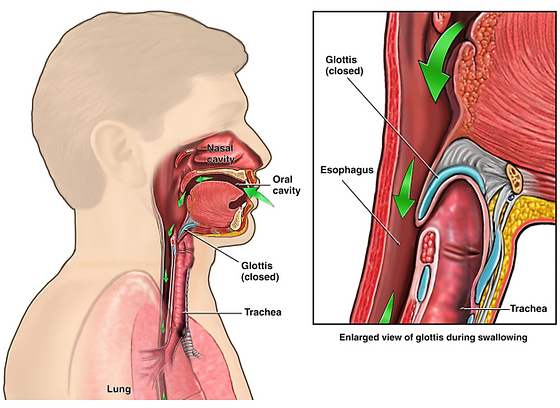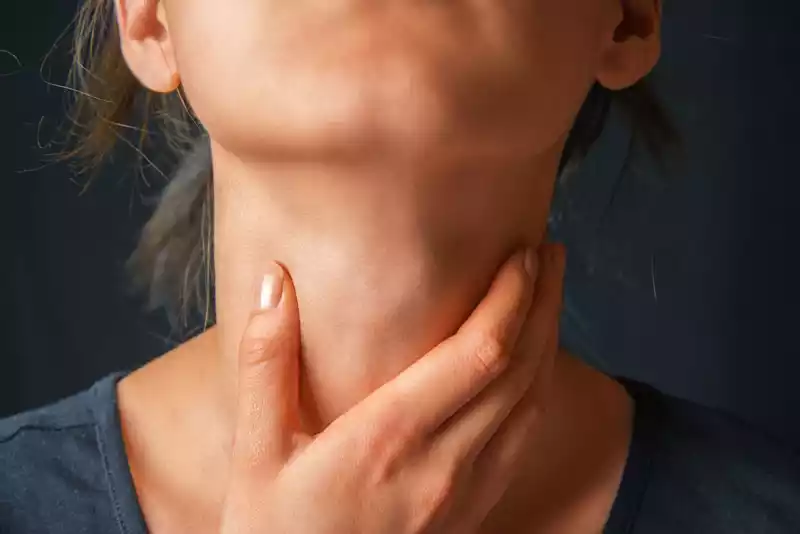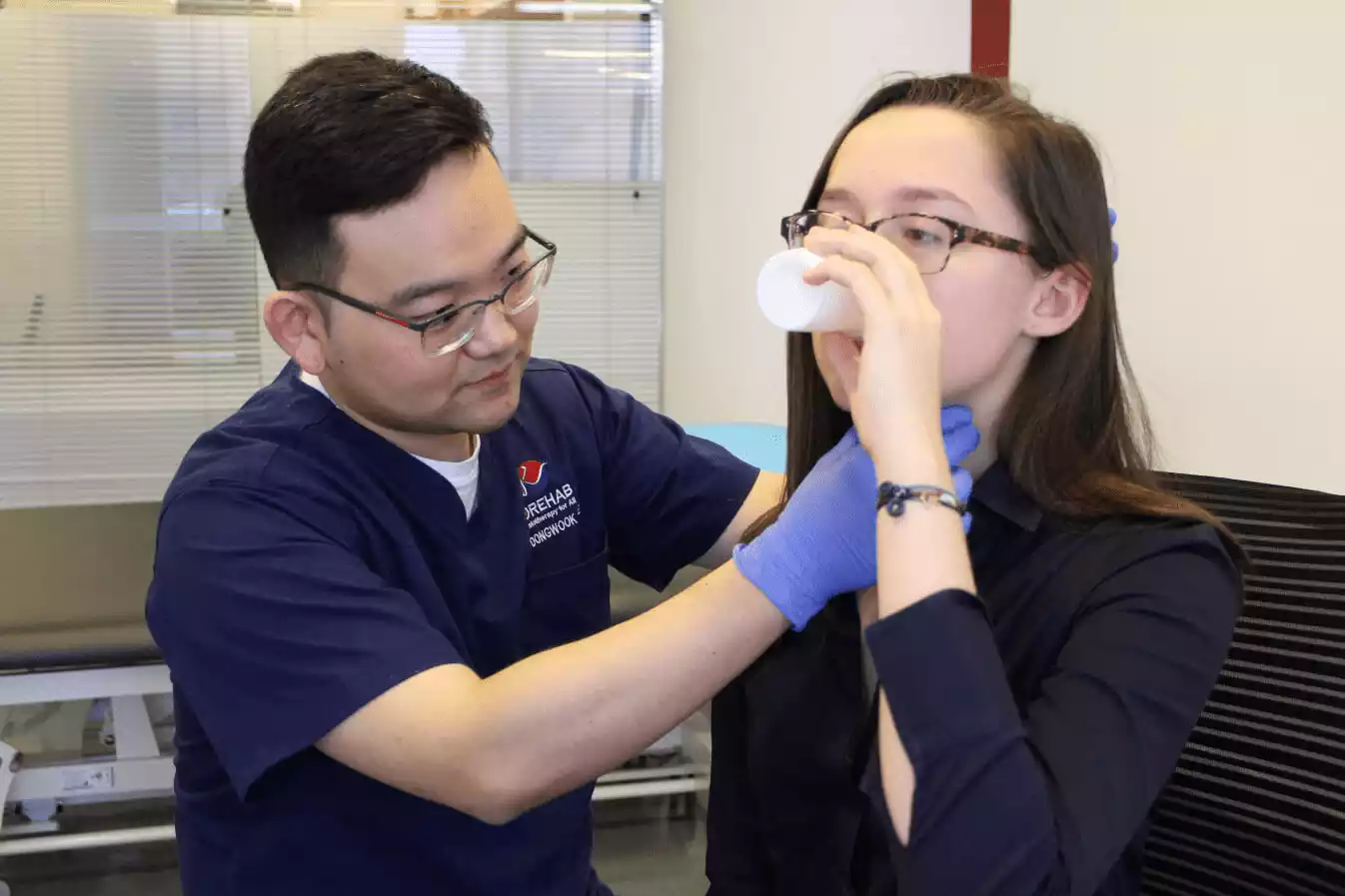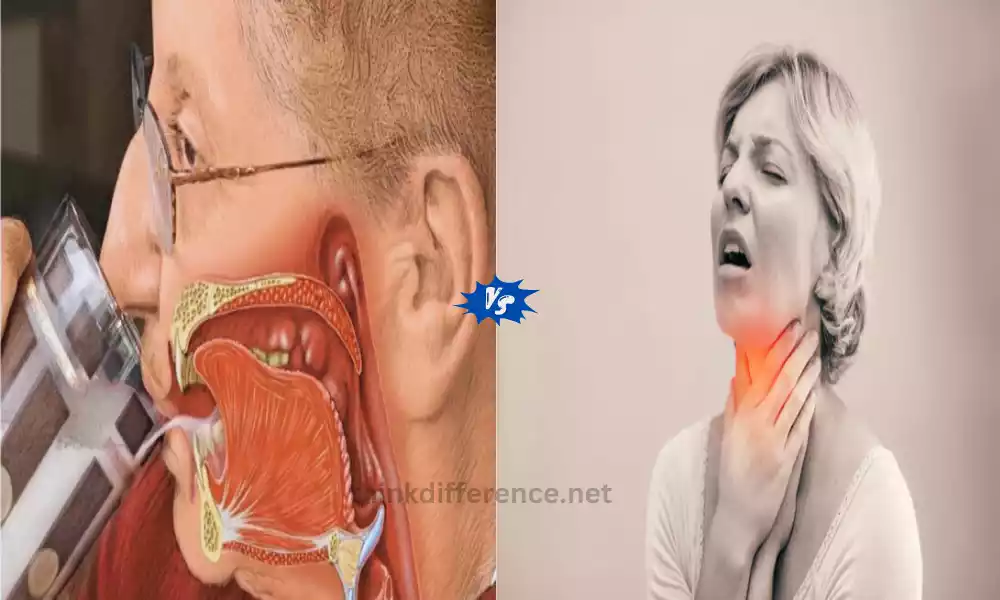Supraglottic and Super Supraglottic Swallow are specialized techniques designed to improve swallowing safety in individuals with difficulties. In Supraglottic Swallow, a deep breath is taken, followed by swallowing and an immediate cough to protect the airway. Super Supraglottic Swallow adds a muscle squeeze to enhance airway closure during swallowing. Both techniques aim to reduce the risk of aspiration, making them valuable tools for managing swallowing disorders and enhancing overall patient well-being.
What is Supraglottic Swallow?

Supraglottic Swallow is a swallowing technique designed to improve airway protection during the swallowing process, particularly in individuals with swallowing difficulties or dysphagia. In this technique, the individual takes a deep breath, holds it, swallows, and then immediately coughs after the swallow. The key element is the cough right after the swallow, which helps to clear any residue or potential aspiration from the airway.
By closing the vocal cords before and during the swallow and then coughing, the Supraglottic Swallow aims to prevent food or liquids from entering the airway, reducing the risk of aspiration pneumonia. This technique is often taught and supervised by speech-language pathologists or other medical professionals experienced in dysphagia management.
How Does Supraglottic Swallow Work?
Supraglottic Swallow is a swallowing technique that focuses on enhancing airway protection during the swallowing process, especially for individuals with swallowing difficulties or dysphagia. Here’s how the Supraglottic Swallow works:
- Preparation: The individual takes a deep breath, which serves to close off the vocal cords and prepare for the swallowing process.
- Swallowing: The individual then swallows while still holding their breath. This action closes the epiglottis (a flap-like structure in the throat) tightly over the trachea (windpipe), preventing food or liquids from entering the airway.
- Cough: Immediately after the swallow, the individual releases the held breath and coughs forcefully. This cough serves as a mechanism to clear any residue or potential aspirated material from the throat and airway.
By holding the breath, swallowing, and then coughing in quick succession, the Supraglottic Swallow effectively enhances airway protection. This technique helps reduce the risk of aspiration, where food, liquid, or other substances accidentally enter the lungs, potentially leading to aspiration pneumonia. Supraglottic Swallow is often used as part of a comprehensive dysphagia management plan and is taught and supervised by trained healthcare professionals, such as speech-language pathologists.
Benefits of Supraglottic Swallow
The Supraglottic Swallow technique offers several benefits for individuals with swallowing difficulties or dysphagia. Some of the key benefits include:
- Improved Airway Protection: The primary benefit of Supraglottic Swallow is enhanced airway protection during swallowing. By closing the vocal cords before and during the swallow and immediately coughing after the swallow, this technique helps prevent food, liquids, or other substances from entering the airway. This reduction in the risk of aspiration can contribute to overall respiratory health and reduce the likelihood of aspiration pneumonia.
- Minimized Aspiration Risk: Aspiration, the entry of foreign substances into the lungs, can lead to serious respiratory complications. Supraglottic Swallow’s focus on clearing the airway promptly through the coughing mechanism helps minimize the risk of aspirated material reaching the lungs, promoting lung health and reducing potential complications.
- Enhanced Swallowing Safety: For individuals with dysphagia or swallowing disorders, safely managing food and liquids can be challenging. Supraglottic Swallow provides a structured technique that individuals can use to ensure safer swallowing, giving them more confidence during mealtimes and reducing anxiety related to swallowing.
- Potential for Improved Nutritional Intake: Dysphagia can lead to inadequate nutrition and hydration due to difficulty in swallowing. By minimizing the risk of aspiration, Supraglottic Swallow may enable individuals to consume a wider variety of foods and liquids, contributing to better overall nutrition and hydration.
- Incorporation into Dysphagia Management Plans: Supraglottic Swallow is a tool that healthcare professionals, such as speech-language pathologists, can include in comprehensive dysphagia management plans. It can be tailored to the individual’s specific needs and incorporated alongside other strategies to optimize swallowing function.
- Increased Quality of Life: Dysphagia can have a significant impact on an individual’s quality of life, affecting social interactions and meal experiences. By promoting safer and more comfortable swallowing, Supraglottic Swallow can contribute to an improved overall quality of life for individuals dealing with dysphagia.
It’s important to note that while Supraglottic Swallow offers these benefits, its implementation should be guided by trained healthcare professionals to ensure its safe and effective use. Individuals with swallowing difficulties should work closely with their healthcare team to determine the most appropriate swallowing strategies for their specific needs.

Super Supraglottic Swallow is an advanced swallowing technique designed to provide an elevated level of airway protection during the act of swallowing, particularly for individuals facing pronounced difficulties or heightened risks of aspiration. Building on the foundation of the Supraglottic Swallow, this technique incorporates an additional step to enhance airway closure.
The individual begins by taking a deep breath to close off the vocal cords, followed by a forceful contraction of the throat muscles just before and during the swallow. This muscle contraction augments the closure of the airway, creating an even more secure barrier against the passage of food or liquids into the windpipe. After swallowing, a vigorous cough is executed to effectively clear any potential remnants or aspirated material from the throat and airway.
The Super Supraglottic Swallow technique is particularly suitable for individuals with severe swallowing challenges, as it offers an advanced level of protection against aspiration and contributes to safer swallowing experiences. Proper instruction and supervision by qualified healthcare professionals are essential for its accurate execution and optimal results.
How to Perform Super Supraglottic Swallow
Performing the Super Supraglottic Swallow involves a series of coordinated steps to ensure effective airway protection during the swallowing process. It’s important to note that this technique should be learned and practiced under the guidance of a trained healthcare professional, such as a speech-language pathologist.
Here’s a general guide on how to perform the Super Supraglottic Swallow:
- Preparation:
- Sit upright in a comfortable position.
- Take a deep breath and hold it. This action closes off the vocal cords and prepares for swallowing.
- Muscle Contraction:
- While still holding the breath, firmly contract the muscles in the throat. You can achieve this by attempting to swallow while keeping your throat muscles tense. This contraction provides an extra layer of airway protection.
- Swallowing:
- With the breath held and the throat muscles contracted, swallow the food or liquid. Ensure a deliberate and controlled swallow.
- Coughing:
- Release the held breath immediately after swallowing.
- Cough forcefully to clear the throat and airway. This cough helps remove any potential residue or aspirated material.
- Rest and Breathe:
- Take a moment to breathe normally and relax between swallows.
Remember that the goal of the Super Supraglottic Swallow is to enhance airway protection by combining breath holding, muscle contraction, swallowing, and coughing. This advanced technique requires practice to coordinate the steps effectively. A healthcare professional can provide personalized guidance, monitor your progress, and make any necessary adjustments to ensure safe and successful execution.
It’s essential to consult with your healthcare provider before attempting the Super Supraglottic Swallow, especially if you have underlying medical conditions or concerns. The technique should always be performed in a controlled and supervised environment to ensure its proper implementation.
Advantages of Super Supraglottic Swallow
Here are the advantages of the Super Supraglottic Swallow technique:
- Enhanced airway protection during swallowing
- Stronger prevention of aspiration
- Suitable for high-risk cases and neurological conditions
- Customizable by healthcare professionals
- Boosts confidence in eating and drinking
- Reduces risk of aspiration-related complications
- Supports rehabilitation efforts
- Improves overall swallowing safety and well-being
Comparison Table of Supraglottic and Super Supraglottic Swallow
Here’s a comparison table outlining the key differences between Supraglottic Swallow and Super Supraglottic Swallow techniques:
| Aspect | Supraglottic Swallow | Super Supraglottic Swallow |
|---|---|---|
| Basic Concept | Breath holding, swallow, cough | Breath holding, muscle contraction, swallow, cough |
| Airway Protection | Effective airway closure | Heightened airway closure with added muscle contraction |
| Muscular Involvement | Breath holding and coughing | Includes muscle contraction during swallow |
| Suitability | General swallowing difficulties | Severe dysphagia and high aspiration risk |
| Emphasis | Preventing aspiration | Enhanced prevention of aspiration |
| Risk Reduction | Reduces risk of aspiration | Significantly reduces aspiration risk |
| Confidence | Boosts confidence during swallowing | Offers greater sense of security during meals |
| Complexity | Relatively simpler technique | More intricate due to muscle contraction |
| Clinical Application | Commonly used in dysphagia management | Preferred for challenging cases, neurological conditions |
| Rehabilitation | Supportive but less robust | Strong tool for rehabilitation efforts |
| Healthcare Supervision | Recommended for proper execution | Essential for safe and effective implementation |
While this table provides a concise comparison, it’s important to consult with a healthcare professional for personalized guidance on which technique is most suitable for an individual’s specific needs.
Clinical Relevance and Considerations

Here’s information about the clinical relevance and considerations regarding the Supraglottic and Super Supraglottic Swallow techniques:
Clinical Relevance: Both the Supraglottic Swallow and Super Supraglottic Swallow techniques have significant clinical relevance in the field of dysphagia management and rehabilitation. They are particularly important for individuals with swallowing difficulties, as well as those at higher risk of aspiration due to various medical conditions. These techniques play a vital role in promoting safer swallowing and reducing the risk of aspiration-related complications, such as pneumonia.
Considerations
When considering the use of these techniques, there are several important considerations to keep in mind:
- Individual Assessment: Each individual’s swallowing difficulties are unique. A comprehensive assessment by a healthcare professional, such as a speech-language pathologist, is essential to determine the most appropriate technique for their specific needs.
- Proper Training: Both techniques require proper training and guidance from qualified healthcare professionals. Incorrect execution could potentially lead to complications, so it’s crucial to learn and practice under supervision.
- Muscle Fatigue: The Super Supraglottic Swallow involves muscle contraction, which might lead to fatigue, especially in individuals with weak muscles. Healthcare professionals will monitor and adjust the technique as needed.
- Patient Cooperation: Individuals need to be able to follow instructions and coordinate the steps of the technique effectively. Physical and cognitive abilities should both be assessed carefully.
- Rehabilitation Goals: The choice between the techniques depends on rehabilitation goals. Supraglottic Swallow might be suitable for milder cases, while the Super Supraglottic Swallow could be more beneficial for challenging cases or neurological conditions.
- Holistic Approach: Swallowing difficulties often have multiple underlying causes. These techniques are part of a holistic dysphagia management plan, which may include dietary modifications, positioning, and other strategies.
- Monitoring and Progress: Regular assessment and monitoring are crucial to ensure that the chosen technique is effective and safe. Adjustments might be needed based on the individual’s progress.
- Patient Education: Individuals and their caregivers should be educated on the chosen technique, its purpose, and correct execution. This empowers them to actively participate in managing swallowing difficulties.
Both the Supraglottic Swallow and Super Supraglottic Swallow techniques offer valuable tools for improving swallowing safety. Their appropriate use depends on individual needs, medical history, and clinical context. Healthcare professionals play a central role in determining the most suitable technique and guiding its proper implementation to achieve optimal outcomes.
Similarities of Supraglottic and Super Supraglottic Swallow
Here are the key similarities between the Supraglottic Swallow and Super Supraglottic Swallow techniques:
- Airway Protection: Both techniques are designed to enhance airway protection during the swallowing process. They aim to prevent food, liquids, or other substances from entering the airway and potentially causing aspiration.
- Breath Holding: Both techniques involve the individual taking a deep breath and holding it. This action closes off the vocal cords and prepares the airway for swallowing.
- Coughing: After the swallow, both techniques incorporate a coughing action. This cough serves to clear the airway and remove any potential residue or aspirated material.
- Dysphagia Management: Both techniques are commonly used in the management of dysphagia, which is the medical term for swallowing difficulties. They are taught and supervised by healthcare professionals to improve swallowing safety.
- Clinical Application: Both techniques are applied in clinical settings under the guidance of speech-language pathologists or other trained healthcare professionals. They are part of comprehensive dysphagia management plans.
- Patient Population: Both techniques are suitable for individuals with swallowing difficulties, especially those at risk of aspiration. They can be particularly beneficial for patients with neurological conditions or post-stroke individuals.
- Focus on Swallow Reflex: Both techniques capitalize on the swallowing reflex and its associated mechanisms to achieve airway protection. They emphasize specific steps to optimize the coordination of swallowing, breath holding, and coughing.
While these techniques share similarities, it’s important to note that the Super Supraglottic Swallow adds an additional step of muscle contraction during swallowing, which sets it apart from the traditional Supraglottic Swallow.
This added muscle contraction is a key distinguishing feature of the Super Supraglottic Swallow and contributes to its advanced airway protection capabilities. As always, individuals should work with healthcare professionals to determine the most suitable technique based on their specific needs and medical conditions.
Last Word
Both Supraglottic Swallow and Super Supraglottic Swallow techniques offer enhanced airway protection during swallowing for individuals with dysphagia. The former focuses on effective breath holding and coughing, while the latter adds muscular contraction for advanced protection. Healthcare professionals guide their implementation, tailoring them to individuals’ needs and ensuring safer swallowing experiences.



